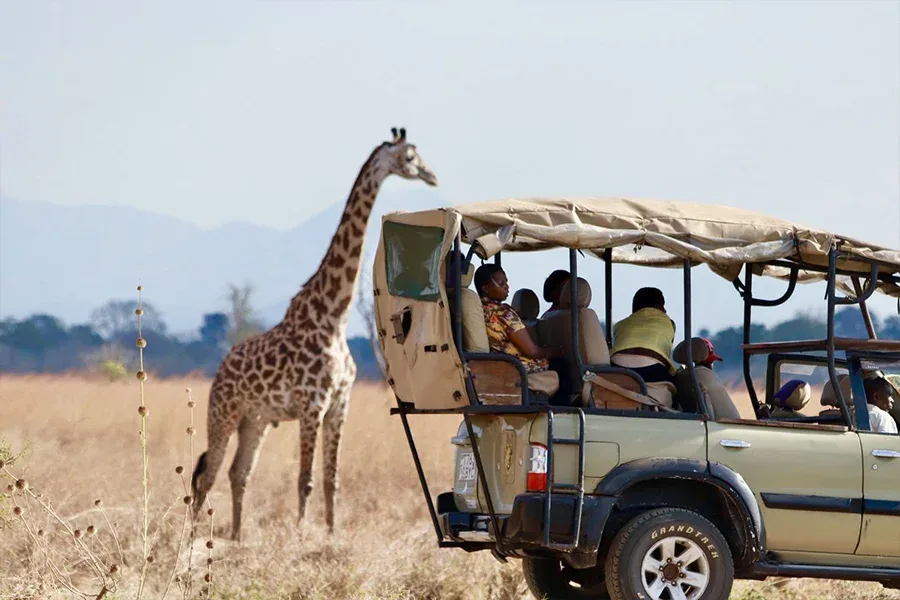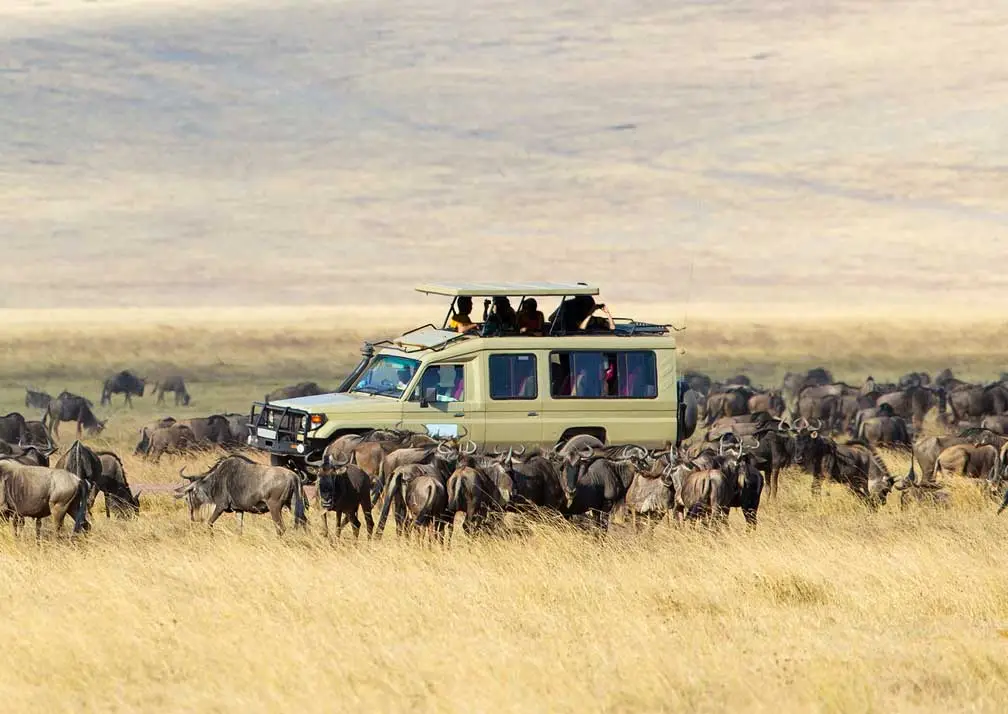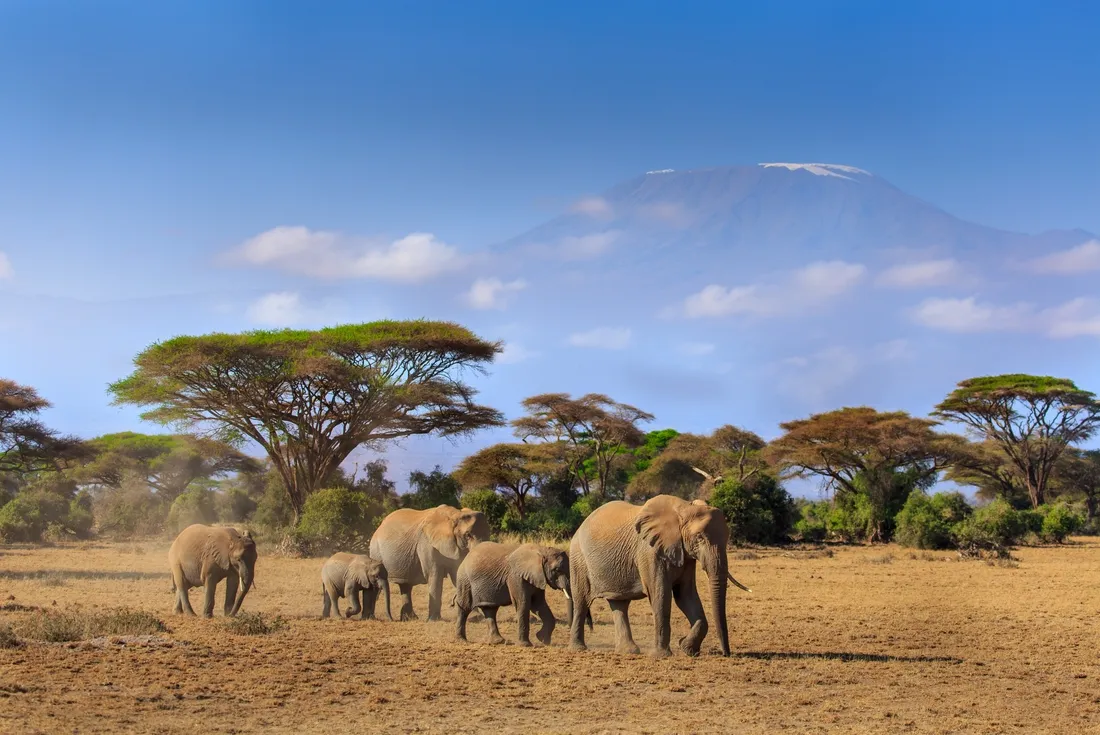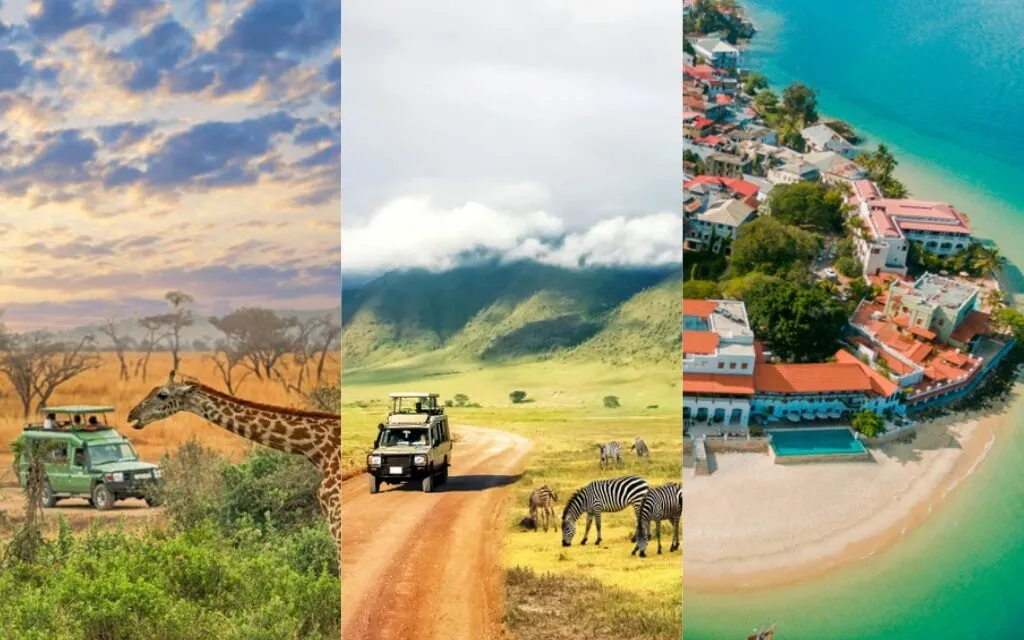Ngorongoro Crater Safari: When to Go & What to See
The Ngorongoro Crater, a UNESCO World Heritage Site, is a natural wonder teeming with wildlife and breathtaking landscapes. Often called the “Eden of Africa,” this massive caldera hosts the Big Five and more in a compact, accessible area. The best time to visit the Ngorongoro Crater depends on what you’d like to experience—dry season (June to October) offers excellent wildlife viewing as animals gather around water sources, while the green season (November to May) brings lush scenery, migratory birds, and fewer crowds. Game drives here reveal an incredible variety of wildlife, from the Big Five to flamingos on Lake Magadi, along with dramatic landscapes shaped by the world’s largest intact volcanic caldera. Below is a practical guide on when to go and what to see on your Ngorongoro Crater safari with Capable Africa Tours.
Plan Your Safari Now
Why Choose a Ngorongoro Crater Safari?
Choosing a Ngorongoro Crater safari means experiencing one of Africa’s most unique wildlife havens, where breathtaking scenery meets an unmatched density of animals. Within the crater’s natural enclosure, you’ll find the Big Five alongside flamingos, hippos, and countless bird species in a truly diverse ecosystem. Game drives here offer incredible photographic opportunities with dramatic backdrops of the crater walls. Unlike many other safari destinations, Ngorongoro provides a compact yet rich wildlife experience, making it ideal for both short and extended trips. Below are the key reasons why a Ngorongoro Crater safari is an unforgettable highlight with Capable Africa Tours..
Ngorongoro Crater Safari Highlights
- Big Five Sightings: Spot lion, elephant, buffalo, leopard, and black rhino in one day.
- Dense Wildlife: Over 25,000 large animals, including cheetahs, hyenas, and hippos.
- Stunning Scenery: Lush crater walls, Lake Magadi, and acacia woodlands create a dramatic backdrop.
- Birdwatching Paradise: Over 500 species, including flamingos, ostriches, and kori bustards.
- Short Game Drives: Efficient 6–8 hour safaris maximize wildlife encounters.
- Cultural Experiences: Visit nearby Maasai villages for authentic cultural insights.
Best Time for a Ngorongoro Crater Safari
The best time for a Ngorongoro Crater safari depends on what you want to experience. The dry season (June to October) offers excellent wildlife viewing as animals gather around water sources, with clear skies and easier driving conditions. The wet season (November to May) brings lush landscapes, fewer crowds, and great birdwatching, though roads can be muddy. Calving season in February is especially remarkable, as thousands of wildebeest give birth on the southern plains, attracting predators. Below is a seasonal breakdown to help you choose the best time for your Ngorongoro Crater safari with Capable Africa Tours.
Seasonal Breakdown
| Season | Months | Weather | Wildlife Highlights | Pros | Cons |
|---|---|---|---|---|---|
| Dry (Peak) | Jun–Oct | Clear, 60–80°F | Concentrated wildlife at waterholes | Best visibility, easy animal spotting | Higher crowds, dustier trails |
| Short Rainy | Jan–Feb | Light rain, 65–85°F | Wildebeest calving, predator activity | Fewer crowds, lush scenery | Occasional showers |
| Wet | Mar–May | Heavy rain, muddy | Bird migrations, green landscapes | Lower costs, fewer tourists | Slippery roads, limited visibility |
| Shoulder | Nov–Dec | Mixed, light rain | Early migrations, diverse birdlife | Moderate crowds | Unpredictable weather |
- Wildlife Density: Approximately 100 animals per km², among the highest in Africa.
- Calving Season Impact: Over 8,000 wildebeest calves born daily in January–February.
- Visitor Numbers: Around 500,000 tourists annually, with 60% visiting June–October.
Wildlife to See in Ngorongoro Crater
Ngorongoro Crater is often called a natural wildlife haven, offering an incredible chance to spot animals up close within its unique ecosystem. Expect to see large herds of wildebeest, zebra, and buffalo grazing the grasslands, while predators like lions, hyenas, and cheetahs roam nearby. The crater is also one of the few places in Tanzania where you may spot the endangered black rhino. Hippos gather in the swamps, elephants wander the forests, and over 400 bird species thrive around the lakes. When visiting Ngorongoro Crater, expect one of the best wildlife-viewing experiences in Africa. You’ll spot all of the Big Five lion, leopard, elephant, buffalo, and rhino alongside cheetahs, hyenas, wildebeest, zebras, and large flocks of flamingos in the soda lake. It’s like a natural wildlife showcase, all in one breathtaking location. Below is a list of the most remarkable wildlife you can encounter on a safari inside the Ngorongoro Crater with Capable Africa Tours.
Must-See Animals
- Lions: Over 60 lions in prides, often seen hunting or resting near waterholes.
- Black Rhinos: Around 30–40 individuals, a rare sighting due to conservation efforts.
- Elephants: Mostly bulls, grazing in forests or near Lake Magadi.
- Leopards: Elusive but often spotted in acacia trees or near swamps.
- Buffalo: Large herds, frequently seen grazing or wallowing.
- Cheetahs & Hyenas: Active predators, especially during calving season.
- Wildebeests & Zebras: Thousands migrate seasonally, creating dramatic scenes.
- Birds: Flamingos, crowned cranes, kori bustards, and over 500 other species.
Birdwatching Highlights
Birders will love the Crater’s diversity, with Lake Magadi attracting flamingos and pelicans. Look for the secretary bird, augur buzzard, and rare Egyptian vulture. Capable Africa Tours provides binoculars and bird guides for enthusiasts.
Experience Ngorongoro Crater in Action
Watch this video to see why a Ngorongoro Crater safari with Capable Africa Tours is a must-do, featuring the Big Five, vibrant birdlife, and stunning caldera views.
Planning Your Ngorongoro Crater Safari
When planning your Ngorongoro Crater safari, start by choosing the best season to visit, typically during the dry months for easier game viewing. Research the wildlife you hope to see and plan your daily itinerary to maximize time in key areas like the crater floor and surrounding highlands. Arrange accommodations in advance and consider a mix of lodges and camps for comfort and convenience. Ensure your transport is reliable and suitable for rough terrain, and pack essentials like binoculars, sun protection, and a camera.
Sample Itinerary (1-Day Safari)
- 05:30 AM: Depart from Arusha/Karatu with Capable Africa Tours.
- 08:00 AM: Enter the Crater, begin game drive (lions, rhinos, elephants).
- 12:00 PM: Picnic lunch by Lake Magadi with hippo sightings.
- 01:00 PM: Continue game drive (leopards, cheetahs, birdlife).
- 04:00 PM: Ascend Crater rim, return to lodge or Arusha.
Preparation Tips
- Clothing: Lightweight, neutral-colored layers (khaki, green); long sleeves for sun protection.
- Accessories: Wide-brimmed hat, UV400 sunglasses, SPF 50+ sunscreen, binoculars.
- Camera Gear: DSLR or mirrorless camera with 200–400mm zoom lens for wildlife.
- Health: Malaria prophylaxis and yellow fever vaccination (check requirements).
- Packing: Small daypack for water, snacks, and personal items.
Ngorongoro Crater Safari Costs and Inclusions
With Capable Africa Tours, a Ngorongoro Crater safari costs $200–$600 per person per day, depending on group size, season, and itinerary. Our all-inclusive packages cover park fees, expert guides, 4x4 vehicles, meals, and transfers. Contact us for a tailored quote.
What’s Included
- Ngorongoro Conservation Area fees ($70–$100 per person per day).
- Professional guides and drivers (1 guide per vehicle).
- 4x4 safari vehicles with pop-up roofs for 360° views.
- Meals (boxed lunches or lodge dining, depending on itinerary).
- Round-trip transfers from Arusha or Kilimanjaro International Airport.
- Binoculars and wildlife guidebooks for shared use.
Additional Costs to Consider
- International flights to Tanzania ($800–$1,500).
- Travel insurance (covering safari activities).
- Tips for guides and drivers ($10–$20 per day recommended).
- Optional lodge stays or pre/post-safari tours ($100–$300 per night).
- Personal expenses (souvenirs, drinks).
Travelers consistently praise the Crater’s compact size for delivering high-impact wildlife experiences in a short time. Families appreciate the family-friendly game drives, while photographers love the close proximity to animals. Capable Africa Tours’ focus on small groups ensures personalized attention and eco-conscious travel.
Ready for Your Ngorongoro Crater Adventure?
Join Capable Africa Tours for an unforgettable Ngorongoro Crater safari. Our expert guides, comfortable 4x4 vehicles, and tailored itineraries ensure you see the Big Five and more in Tanzania’s iconic caldera. Book now to secure your spot!
- High chance of Big Five sightings in a single day.
- Eco-friendly safaris supporting local conservation.
- Customizable itineraries for families, photographers, and groups.
- All-inclusive packages with meals and transfers.
- Expert guides with deep knowledge of Crater wildlife.
Limited safari spots available — book your Ngorongoro adventure today!
Plan Your Safari Now


